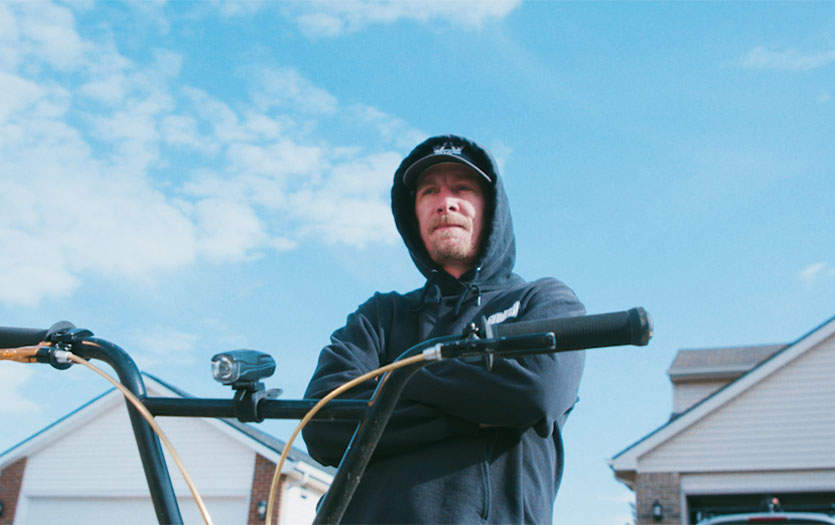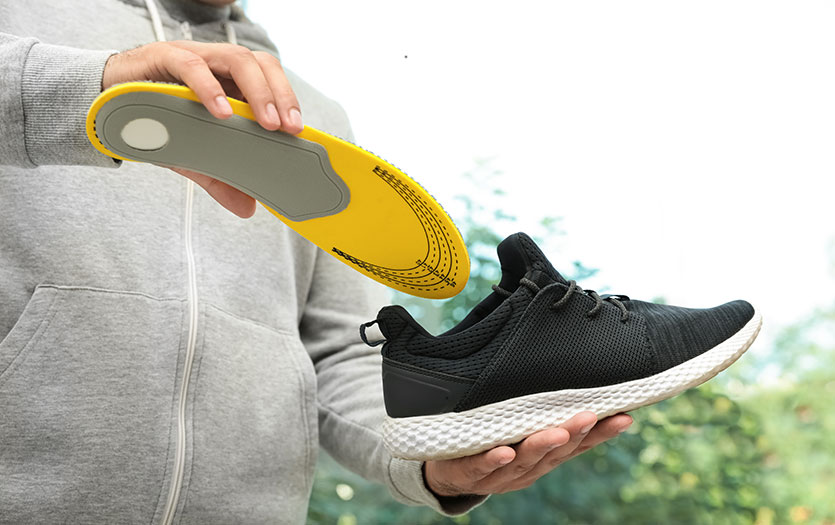For Luke Newnum, back pain is a familiar foe. Five years ago, he underwent surgery for a herniated disc, only to have the condition return, limiting his ability to work, lift items over five pounds and enjoy leisure activities like riding his bike and working on his truck. When he started experiencing similar symptoms in his sciatic nerves, he knew who to turn to.
Ahmer Ghori, MD, spine surgeon, SpineONE, Ortho Northeast, treated Luke during his first battle with lumbar disc herniation. “What we see in these cases is a piece of the spinal disc breaks off and causes pain down the leg. The disc functions like a shock absorber, but over time, with repetitive load, the spine can develop what look like paper cuts. Through those paper cuts, disc material can leak out and irritate or compress nerves. We can usually treat this without surgery, but by the time patients come to see the surgeon, they’ve already tried physical therapy, injections and some of the conservative methods we try first.”
Finding the right surgical solution
When Luke presented with recurrent disc herniation, Dr. Ghori explored three surgical options. “The first option was a revision discectomy,” Dr. Ghori explained. “But the challenge was there was too much scar tissue at the site of the herniation. There wasn’t enough room as I would have liked to operate safely. So that brings us to fusion options, which involve removing additional bone in the back of the spine to access the disc from a safer location. Traditionally, we would use screws, rods and a cage during this procedure, but for Luke, the other side of his spine didn’t bother him and all the pathology indicated the issues were limited to one side. By limiting the surgery to just one side, he had less surgery, which meant a quicker recovery.”

Dr. Ghori performed a freestanding transforaminal lumbar interbody fusion (TLIF) to remove the ruptured disc using a minimally invasive technique. He then used a spacer to provide stability.
Luke’s back!
Luke shared that he chose to return to Dr. Ghori because he knew the surgeon’s team and was confident that he was in good hands. He was adamant about maintaining his mobility and lessening pain during recovery.
The TLIF approach was, “way less invasive, a lot quicker recovery, I didn’t have lasting pain or lose any mobility and it helped a lot,” Luke reported. “Literally, from day one, two hours after, I was up and moving around. It improved my quality of life and allowed me to continue to do what I enjoy with my family and friends.”
Luke is back to riding his bike, working on his truck and enjoying the physical activities he did before the herniation. “I still have many years of work before me and I wouldn’t have been able to continue without the care of Dr. Ghori. He put me back on track,” Luke said. And, perhaps most important of all, he shared, “My kids got their dad back!”
To schedule orthopedic care in Allen County, call Ortho NorthEast at 260-297-3607 or request an appointment here, or visit this page to find orthopedic care outside of Allen County.



